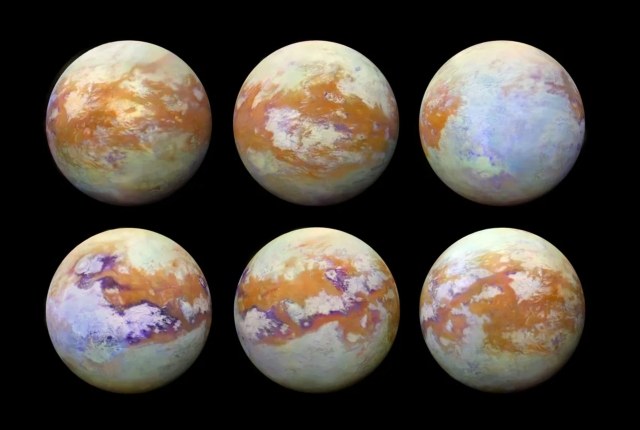Seas carved by light waves, rivers, coasts, canals, estuaries, tidal currents. However, instead of water, there is liquid methane. This is the landscape of Titan, the largest of Saturn's 145 moons and the second largest in the Solar System. A new study published in Nature Communications has revealed new details about the composition and behaviour of its hydrocarbon-fuelled basins, thanks to data collected by the Cassini probe.
"Methane plays a similar role on Titan to that of water on Earth. It is the protagonist of a complex 'hydrological' cycle with precipitation, lakes and large seas interconnected by channels, estuaries and rivers", explains Paolo Tortora, a professor at the Department of Industrial Engineering at the University of Bologna, a former member of the Cassini mission Radio Science Team and co-author of the paper. "Thanks to a series of bistatic radar experiments carried out by the Cassini probe, this study has provided new information on the many unanswered questions about Titan's seas.
The Cassini mission explored the Saturn system for thirteen years, from 2004 to 2017, collecting a huge amount of data about Titan. Among its many surveys, the NASA, ESA and ASI probe also conducted thirteen bistatic radar experiments, and on four occasions, the powerful echoes reflected from the lunar seas - Kraken, Ligeia and Punga Mare - reached the large Earth-based antennas of NASA's Deep Space Network.
"The bistatic radar experiment is a radio science experiment that uses the interaction between the surface of a target planet, in this case Titan, and a radio signal transmitted by a satellite to obtain information about the properties of the reflecting surface", says Giancorrado Brighi, a PhD student at the University of Bologna's Radio Science and Planetary Exploration Laboratory at the Aerospace Technopole at the Forlì Campus, and second author of the study. "Unlike monostatic radar, where the Cassini probe acts as both transmitter and receiver of the reflected echo, the oblique geometry and circular polarisation of the bistatic experiments allowed us to measure directly the surface dielectric constant of liquids, which is closely linked to their composition".
About eight years after these signals were received, a collaboration of several international institutes led by Cornell University (USA) and the University of Bologna, succeeded in completing the analysis and interpretation of the data, which revealed variations in the composition of Titan's various seas, consistent with differences in the percentages of methane, nitrogen and ethane mixed together. The estuarine data also seem to indicate that methane-rich rivers may have lower ethane levels than open seas: something similar to the difference in salinity between rivers and seas on Earth.
By analysing the surface of the seas, the scientists also estimated a surface roughness of a few millimetres, suggesting the presence of small waves on the surface and the absence of strong swells. However, a higher roughness was found in coastal areas, near estuaries and in the narrow channels that connect some of the seas, probably indicating the presence of tidal currents.
"Combining the bistatic radar measurements with other contextual data collected by the Cassini probe to refine previous analyses and reveal new details about the composition and appearance of Titan's surface", concludes Marco Zannoni, co-author of the paper and researcher at the Department of Industrial Engineering at the University of Bologna. "We are confident that this work will mark the start of a promising new exploration campaign, using established expertise to analyse the remaining bistatic radar data acquired by the Cassini probe on Titan's solid surfaces.
The study was published in Nature Communications under the title "Surface properties of the seas of Titan as revealed by Cassini mission bistatic radar experiments". Participating for the University of Bologna were Giancorrado Brighi, Paolo Tortora and Marco Zannoni from the Department of Industrial Engineering.

